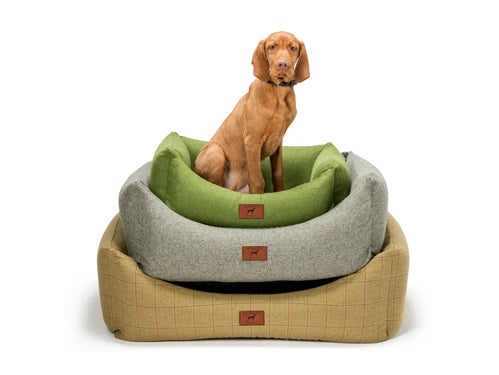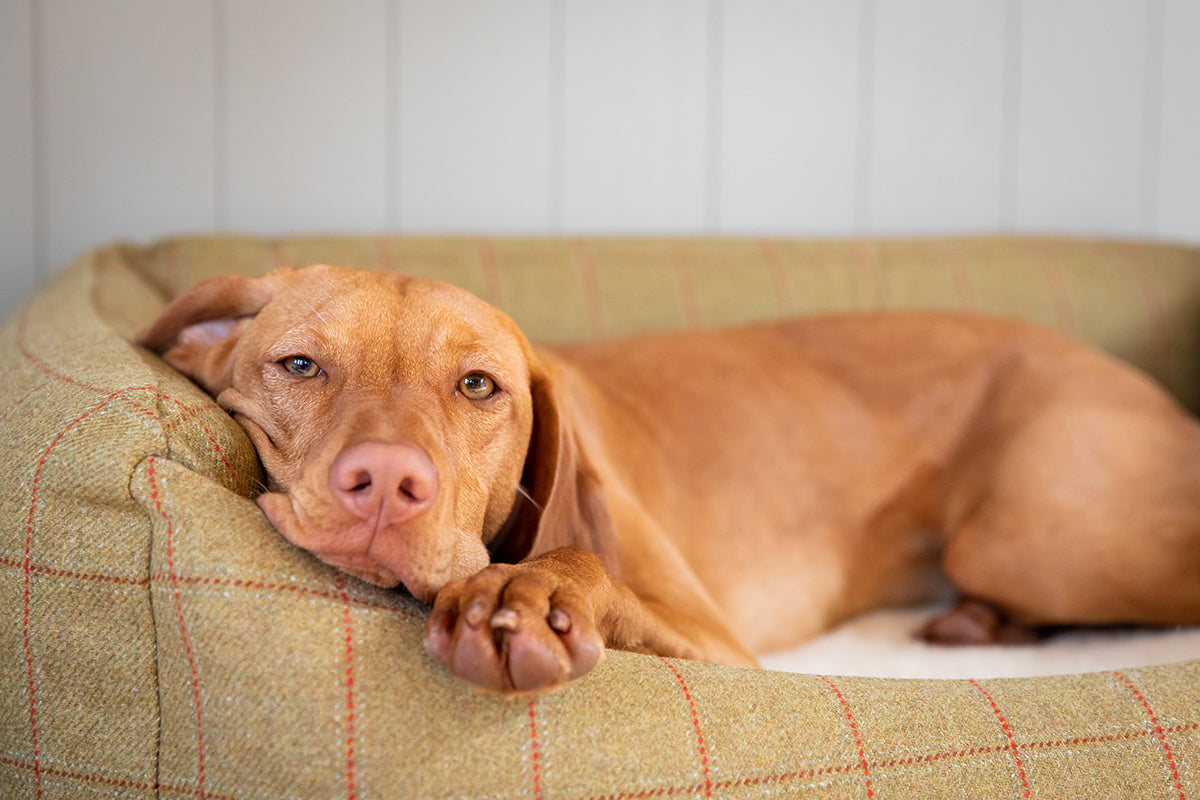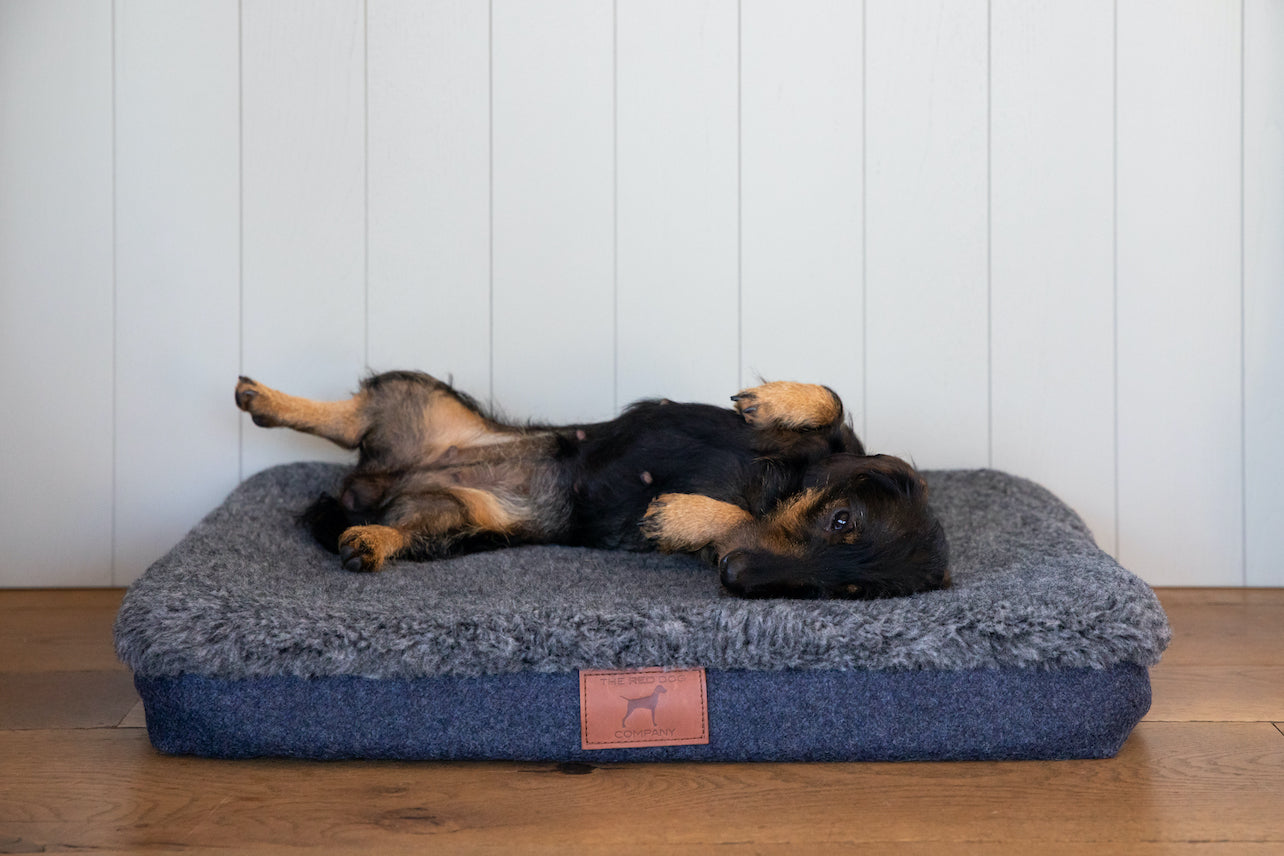Deciding on breed, the age of the dog (puppy or a more mature dog), and whether you’d like to buy or adopt, can be tough enough already. It takes hours of consideration and research to make sure you’re making the right call for you, your household, and your soon-to-be new furry friend that your head’s probably spinning by the time you get around to choosing pet insurance and shopping for essentials like food, toys, and treats. To make your life that little bit easier, we’ve decided to take the guesswork out of one of the most essential things you’ll have to purchase along the way. So without further ado, here is our guide to choosing a dog bed.
What size bed should I buy?
There are plenty of factors that’ll undoubtedly play a role in your decision, but the size of the bed should definitely rank as the most important. Considering dogs spend anywhere between 12 - 18 hours per day snoozing or simply relaxing in their beds, you want to ensure it’s actually a comfortable size for them. Although one size might seem a great fit when your dog is curled up, it might suddenly become too small when they’re sprawled; this is where measurements come in handy.
If you’re buying a bed for the long haul, it’s also important to take your dog’s age into consideration as they continue to grow up until 10 - 24 months (depending on the breed). It’s okay for your Lab puppy to sleep in a larger bed; they may look a little lost now, but as they continue to grow, they’ll appreciate the space.
What shape of bed should I buy?
Not that there are too many to choose from, but whether you opt for a mat or rectangular bed might actually depend on your dog's personality. Some instinctually sleep tightly curled up to keep themselves warm and safe and although this doesn’t warrant a smaller bed, it just means you don’t have to worry too much about getting an overly large one. Then, of course, the opposite is true for dogs who like to spread out and require extra room. The latter is especially important for dogs with any medical issues such as joint pain as they shouldn’t feel cramped or forced to stay in certain positions that might agitate the injury further.
If you’re uncertain, rectangular dog beds are probably more traditional but can again come in a few different varieties. Bolster beds, which feature a ‘wall’ around the sides and back offer a bit more structure and support, whilst ensuring comfort and warmth, whereas a mat might be nicer to spread out on in warmer weather. Fortunately, beds like ours are actually made to regulate temperature and can be used all year round.
Some other shapes include cave beds that are enclosed on one side and might benefit anxious pups. There are also plenty of novelty beds like dog teepees or little sofas, which are all fine as long as you’re making sure they check all the boxes when it comes to your dog’s needs.
What type of bed should I buy?
Speaking of considering your dog’s needs. Choosing not the shape or size, but the type of bed to purchase will be hugely determined by traits, personality, and health.
Crates
Crates can be very helpful when potty training puppies because they are taught that there is a dedicated space to do their business, but it’s also beneficial for bigger dogs who might require a space they can take ownership of. A so-called open ‘den’ where they can retire to when feeling stressed or if they just want to chill out a little. Beyond that, crates are also straightforward to clean and can easily turn into a dog carrier if you’re taking your dog on the road with you. It’s important to note that a crate has to be large enough for your dog to have more than enough room inside, even when sitting or standing up.
Raised
Raised beds are especially beneficial for dogs who struggle with temperature regulation. Because the bed is elevated, it allows for ventilation to keep the body cool during warm weather, but it also doesn’t sit on cold cement, tile or wood during winter months. Raised beds are also quite firm, offering good support for dogs and by keeping their bones from sagging into the floor, joints stay a little more protected.
Orthopaedic
Even though we believe all our canine friends deserve the orthopaedic treatment, we especially recommend it for older dogs or those suffering from arthritis or joint pain. The firm memory foam mattress will mould to the body and ease pressure on the joints to ensure your dog is as comfortable as they possibly can be. Besides, having the skeletal structure supported can only ever be a good thing.
Heated
There are a number of breeds that aren’t too well equipped for the cold. Dogs like Beagles, Pugs, and French Bulldogs are all either better suited for warmer weather or just have problems regulating body temperature. If your dog falls into this category, you might just be better off opting for a bed that can keep dogs cool in summer and warm during colder months, like ours.
Waterproof
Waterproof beds aren’t only great for puppies or older dogs prone to accidents, they’re also ideal for females in heat and dogs who enjoy the outdoors. You know, those pets who love getting muddy or swimming or even dogs who love wriggling themselves dry after a bath. Beds like ours that make use of a water-resistant liner and waterproof base are especially effective in keeping the bed dry and protected from anything your dog might wreak upon it, but also against moisture on the floor around the bed.
Other factors in our guide to choosing a dog bed
Durability
A durable bed is a big tick in the pros column. Dogs can drag, dig and chew their beds and you want something that is tough enough to endure all their rough play.
Comfort
If nothing else, your dog has to feel comfortable in whichever bed you choose to buy for them. We’ve already covered a lot of why that’s important in this article, as well as a previous article discussing what the best dog bed is for a Golden Retriever, but we’ll recap by saying that allowing your dog to either curl up or stretch out comfortably in their bed will cause them to sleep well. This in turn will keep them in peak physical and mental form and make for an all-around happy dog.
Support
If you’re investing a lot of time, money, and love into your pet, it goes without saying that you would want to keep them happy and healthy for as long as you possibly can. A big part of that is making sure they're well taken care of during their snoozes. With the number of hours dogs spend in bed, it only makes sense to invest in a product that offers a solid structure and firm base to keep their bodies supported, snug and that’ll stop them from sinking through.
Washability
The last thing you want after investing in a dog bed is for it to not be machine washable. In some cases, you might even find products claiming to be and then actually not holding their shape well after they’ve been through the washer. It’s important to find a bed with removable covers, like ours, so you’re able to give them a wash every two weeks. You might not think so, but dogs love having a clean space and probably don't like it very much when we leave their beds dirty for too long. Besides, washing the bed regularly also rids it of the natural dog odours and any unwanted guests like fleas.
That’s our guide to choosing a dog bed. Remember that it mostly comes down to your dog’s individual traits, but if you’d like to hear from other dog owners and their dog bed purchases, feel free to look through our reviews.



